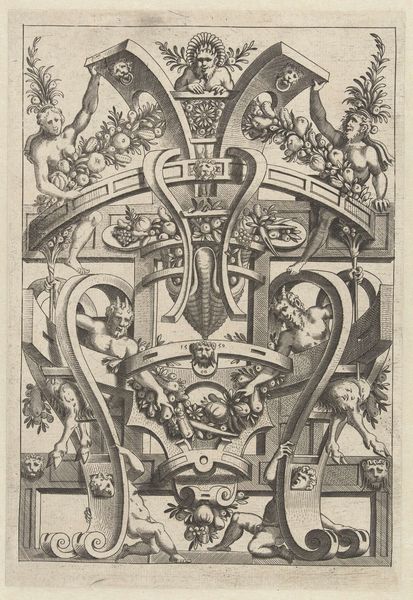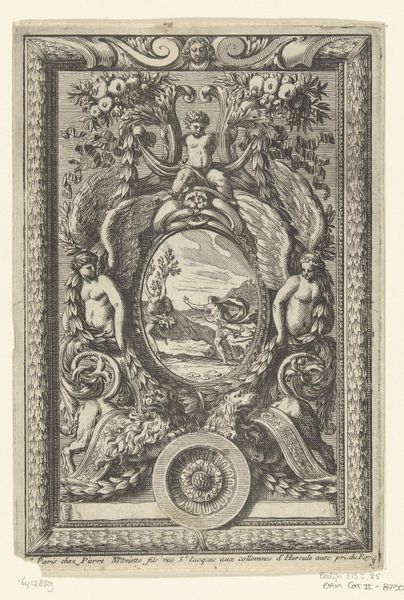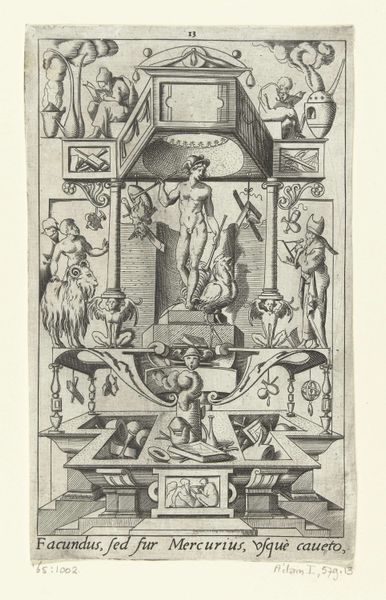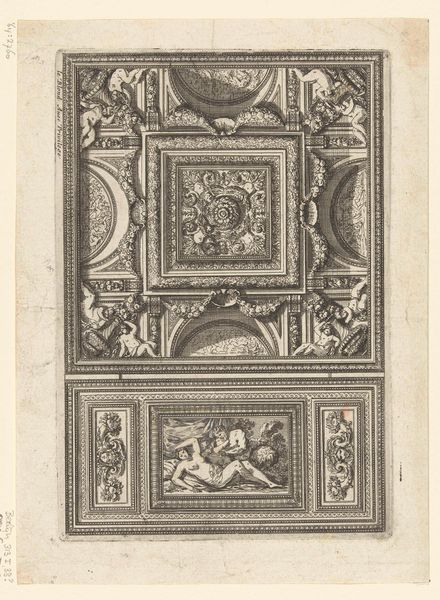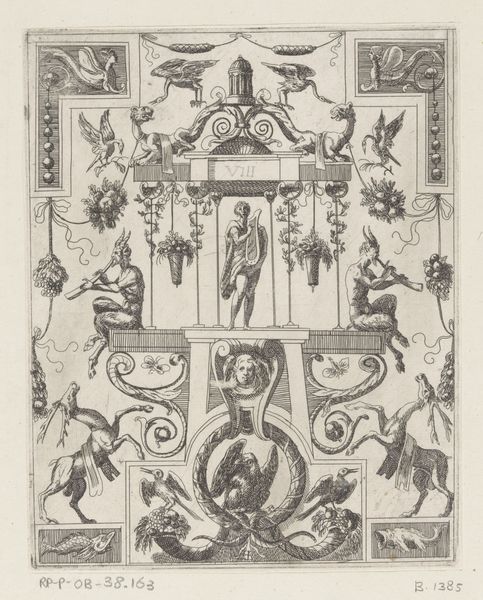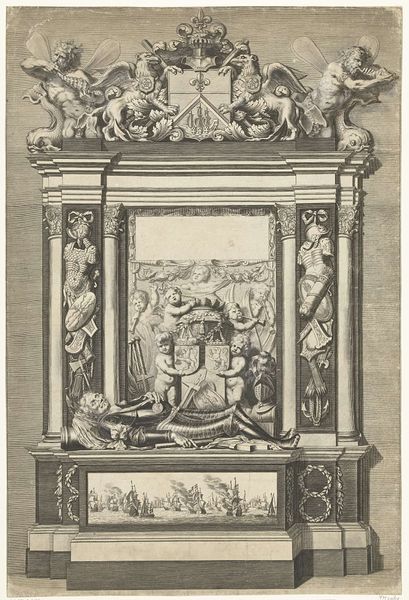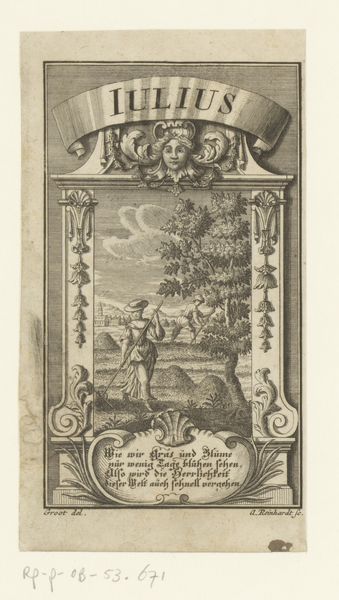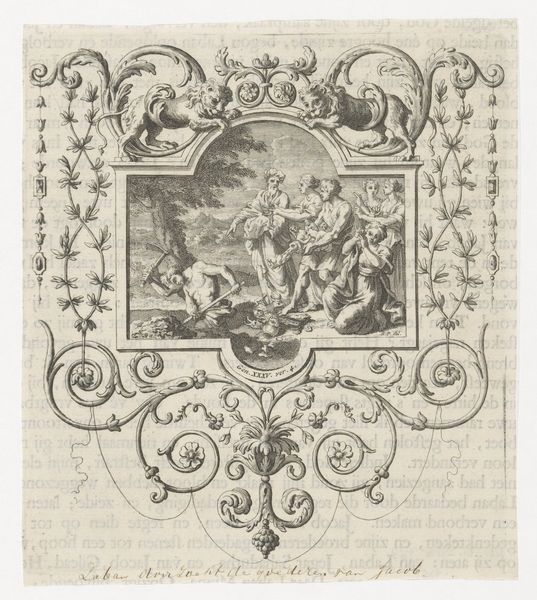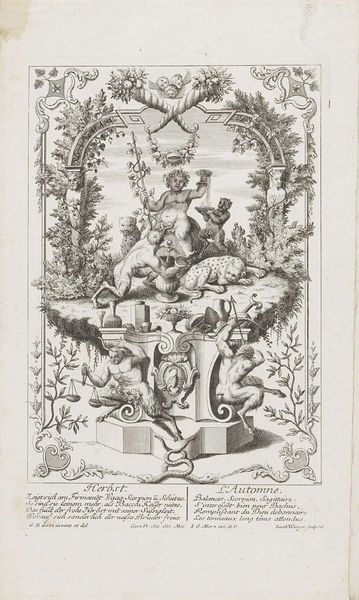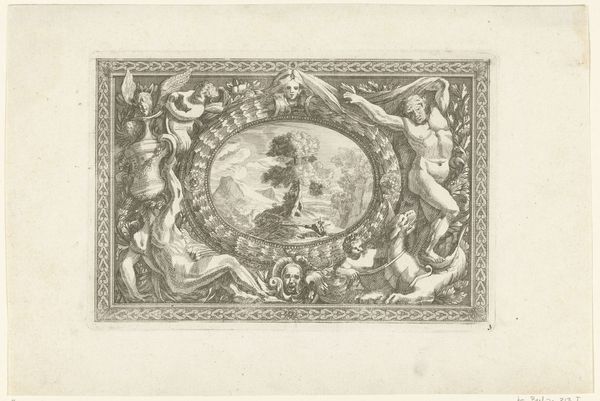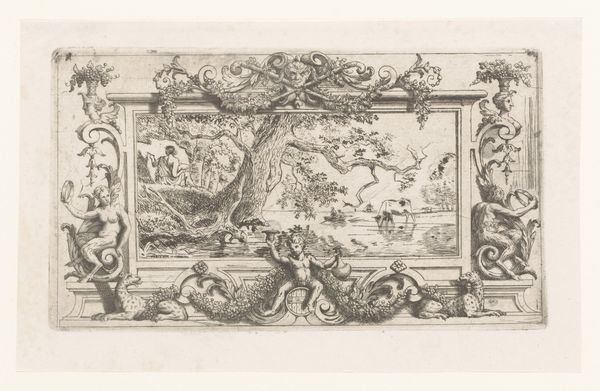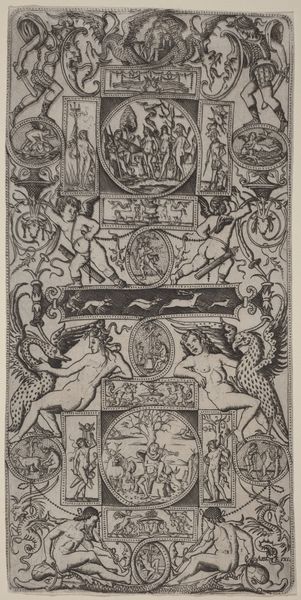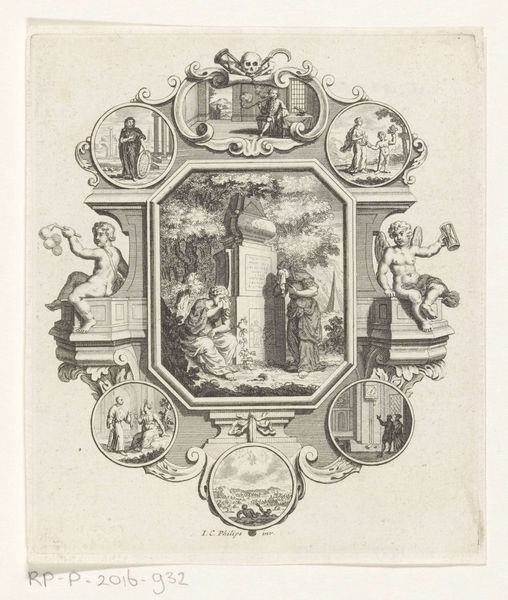
Slag bij Kassel (1677), schildering in het grote trappenhuis te Versailles 1725
0:00
0:00
louissurugue
Rijksmuseum
print, engraving
#
aged paper
#
baroque
# print
#
old engraving style
#
landscape
#
figuration
#
line
#
history-painting
#
engraving
Dimensions: height 402 mm, width 251 mm
Copyright: Rijks Museum: Open Domain
Curator: Ah yes, "Slag bij Kassel (1677), schildering in het grote trappenhuis te Versailles," rendered in 1725 as an engraving after Louis Surugue, now housed at the Rijksmuseum. The battle scene seems almost swallowed by the elaborate frame, doesn’t it? What strikes you about it? Editor: The ornate frame is the first thing that grabs my attention! It nearly overwhelms the central battle scene. I wonder, though, what the relationship is between this decorative framing and the printmaking process. How do you interpret this work through a materialist lens? Curator: Excellent question! Let's consider the social and economic context of its production. This print is a reproduction of a painting within the Palace of Versailles. What purpose did prints like this serve at the time? Think about access and distribution. Editor: I guess this made it available for a broader audience, sort of a portable Versailles for those who couldn't physically be there. The printmaking process democratized the image, even if it was still mainly reaching the wealthy. Curator: Precisely! And what does the emphasis on intricate detail, achieved through the labor-intensive process of engraving, tell us? The skilled engraver becomes crucial. Editor: It makes me consider the value placed on skill and craft. High art in service of a particular narrative, of war and aristocracy, mediated through the hand of the artisan. Curator: It's all about disseminating power and legitimizing Louis XIV’s reign. How interesting to see this unfold materially. Editor: Definitely. Thinking about it as a commodity shifts my perspective entirely. The frame is not just decoration. Curator: Exactly! It amplifies the value, reinforces status, and makes a grand political statement available for at-home consumption. The lines between art, craft and propaganda blur. Editor: It shows me how art serves ideological purposes but also considers the means of production and its socio-economic implications. Curator: I completely agree. It challenges us to reconsider art as embedded in complex material, political, and social realities.
Comments
No comments
Be the first to comment and join the conversation on the ultimate creative platform.
